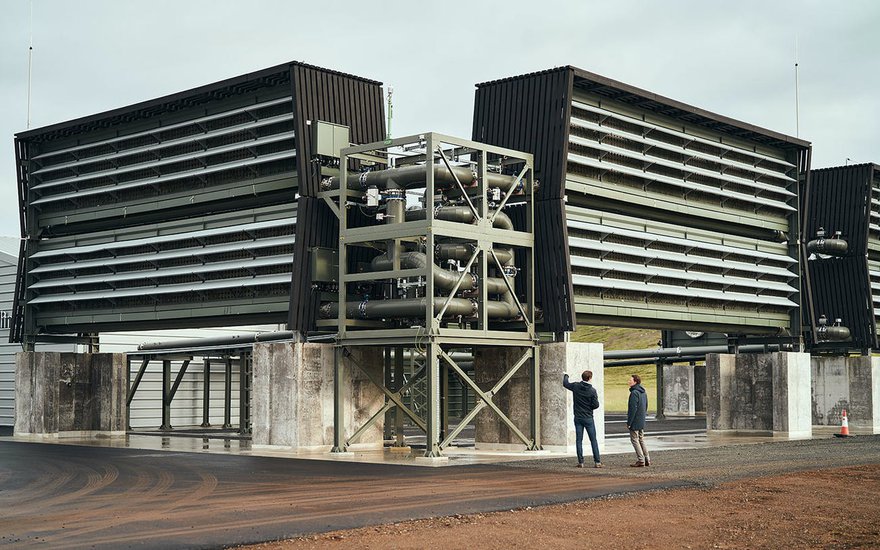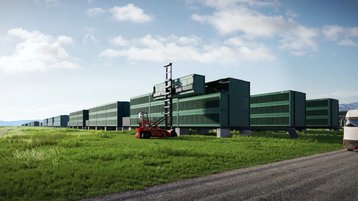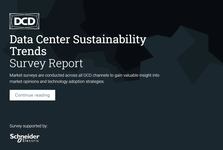The human race needs to have less carbon dioxide in the Earth’s atmosphere. We are seeing the hottest temperatures ever and the world is expected to break the 1.5°C temperature threshold within five years.
We have a limited budget of greenhouse gases we can emit - 380 billion tonnes- and we are expected to burn through that in the next nine years.
Against this background, tech firms aiming to reach net-zero have found some emissions are stubborn and irreducible. For Microsoft, the problem is “Scope 3” emissions produced by its Xbox sales, among others.
Given all this, it’s not surprising that tech players like Microsoft, governments, and agencies all the way up to the International Energy Agency (IEA) are increasingly saying that carbon capture technologies will be needed to pull CO2 back out of the air and eventually get the planet back on course.
That sounds logical, but respectable figures are dismissing carbon capture as a “hoax” or a “mirage.”
UN secretary-general António Guterres has said that when the oil industry touts carbon capture, it is providing a false justification for continuing to use oil, describing the oil industry's carbon capture-based expansion plans as “proposals to become more efficient planet wreckers.”
Greenpeace International founder Rex Weyler has described carbon capture as a "scam" by oil companies, designed to divert billions of pounds of money to continue a deception in which they pose as environmentally responsible organizations while distracting public attention from the need to stop burning fossil fuels in the first place.
What’s the truth in all this?
Carbon capture in brief
There are two distinct strands to the carbon removal story, usefully explained in a primer from EnergyWorld. Carbon capture and storage (CCS) has been developing for some time in the energy and heavy industry sectors. It siphons carbon dioxide out of the flues of power stations, so it can be captured and stored permanently.
Direct air capture (DAC) takes a different approach, drawing CO2 out of the atmosphere, anywhere in the world, away from the sites where it is produced. Both use similar storage methods, essentially making the CO2 inert and injecting it underground.
These methods might sound similar, but CCS is a lot easier because smoke stacks are very rich in CO2. About 12 percent of the exhaust gas from a power plant is carbon dioxide. That can be captured cheaply.
By contrast, DAC systems such as ClimeWorks in Iceland have to work with the normal atmospheric concentration of only 420 parts per million (0.042 percent), and that puts the price up.
CCS can produce carbon dioxide at around $20 per tonne, while DAC currently costs around $1,000 per tonne.
On top of this, the energy demands and cost of both techniques vary according to the purity of the CO2 they produce.
Jonas Lee, chief commercial officer at US firm CarbonCapture, explains it as follows: “The cost of capturing CO2 changes based on the purity of CO2 output. To drive to 50 percent, purity is one figure. To get to 99 percent is a much higher number.”
That’s significant, because some ways to dispose of carbon dioxide, like mineralization, don’t need very pure CO2. “If you combine it with water, you can feed in 50 percent carbon dioxide, and the mineralization process will work.”
If your carbon capture system aims to produce pure carbon dioxide for use in industrial processes, instead of storage, then it will be more expensive.
Backing for CCS
Looking at the location of carbon capture, it is tempting to think that it should all be done by CCS in smokestacks, where it is cheaper.
The US is subsidizing both CCS and DAC. The Bipartisan Infrastructure Law has allocated $3.5 billion for regional direct air capture hubs. The Inflation Reduction Act allocates a subsidy of $85 per tonne of CO2 permanently stored, or $65 per tonne taken out of the atmosphere for use.
These subsidies could seed a major carbon capture industry in the US, says Lee: “Those two things have really made it so that it doesn't really make much sense to go anywhere else.”
One sign of the burgeoning interest, says Lee, is a bottleneck in applications for "Class 6" certificates on injection wells, to satisfy the demands of companies like CarbonCapture. These wells take a lot of certification - which is a good thing because we want to ensure that the storage is permanent.
However, if the world is aiming to decarbonize, environmental advocates want some distinctions made. Instead of using CCS to clean up smokestacks, we should be finding ways to avoid burning fossil fuels in the first place.
CCS just reduces the new CO2 being pumped into the atmosphere, while DAC is a "negative emissions" technology that removes existing CO2.
It also has a negative history, however. CCS has been touted by the oil industry as a way to reduce CO2 emissions, but it has actually acted more as a way for energy companies to keep burning oil.
The CO2 they captured has very often been pumped into boreholes to increase extraction by pushing more oil and gas to the surface. Somewhat surprisingly, the Biden Administration has included this use (“enhanced oil extraction”) for the $65 CCS subsidy, even though it actually results in more emissions overall.
It is schemes like this that have led to opposition from people like Guterres and Weyler.
However, the energy industry has produced other schemes which might potentially be more beneficial. The UK’s Drax power station burns biomass, and plans to remove carbon from the smoke stack. Since it is burning recently grown material rather than fossil fuel, this bio-energy carbon capture and storage (BECCS) scheme could be potentially carbon negative, producing energy and reducing the carbon in the atmosphere as new material is grown.
Similar schemes are being put in place within Denmark, sometimes referred to as BECCUS, because they also propose to produce CO2 for use as well as storage.
Denmark aims to become Europe’s premier carbon storage site. Multiple projects have started, backed by Total, Ineos, and Wintershall DEA to store millions of tonnes of CO2 in the sandstone of used North Sea oil and gas reservoirs. Other countries in Europe are expected to pump their captured carbon to Denmark for disposal.
DAC backing
If the planet is to rebalance the atmosphere in the long term, there will need to be some method to take CO2 out of the air. It is not possible to plant enough trees to do this, because of the sheer volume of fossil fuels which will have been burnt in the last two centuries.
The world needs to remove 10 billion tonnes (10Gtonne) of carbon dioxide per year by 2050 in order to remain on a path to limiting global warming to 1.5°C. So the world is turning to DAC, along with some possible biologically-based methods (see Box)
“We should do as much as we can with nature-based solutions,” says Lee. “But land is a competitive asset.”
Solutions around trees have proven to be unreliable and easy to falsify. There have been a large number of carbon offset schemes based around forest owners promising not to exploit them. In many cases, they have taken money for old forests which were never going to be cut down - or worse, having the trees cut down anyway.
Solutions based around trees suffer from a lack of “measurability, verifiability, and permanence,” says Lee. “With technical solutions, we actually can weigh the CO2 that we capture, and then pass it to our partner who buries it in Class 6 injection wells 12,000 feet down. They bill us based on how much it weighs. So there's verifiability, as well as third parties that we engage to monitor the whole system.”
Those certified injection wells have to be permanent, he says, “so the cap rock is strong, and there’s no seismic risk, etc.”
Each injection well can handle “somewhere between 250,000 and a million tonnes of CO2 per year, so once a sizeable number are certified, the industry will have a good prospect of storing plenty of CO2.”
The economics of DAC are still emerging, and current technologies also need a lot of power. Currently, it takes around 1200kWh (1.2MWh) to remove a tonne of CO2, and this is not expected to fall below a minimum of 250kWh to create pure CO2.
Removing the total requirement - 10Gtonne - at a cost of 1Mwh per tonne would need a total of 10 billion MWh, a staggering amount beyond the amount currently used in domestic electrical systems.
It also requires renewable energy - for the simple reason that: using fossil power could push more carbon into the atmosphere than the DAC system removes. That renewable energy ideally also needs to be new, otherwise you are forcing other industries to rely on fossil fuels, defeating the point.
Go where the power is green
For this reason, DAC schemes are starting relatively small, and the leader, ClimeWorks, is located in Iceland, where it has had backing from Microsoft, and also former Microsoft CEO Bill Gates, both of whom have paid a reputed $1,000 per tonne of CO2 removal to get the project started.
Iceland is a logical place to start such a project because it has far more renewable energy than its population of 300,000 can use.
However, the total energy available there is small in global terms, and so far ClimeWorks has only been able to remove CO2 roughly equivalent to the emissions of less than 1,000 cars.
For this reason, and for the subsidies, CarbonCapture is located in the US, says Lee, with a pilot plant in Wyoming.
“For direct air capture, we could be anywhere,” he explains. “We can go where the land is cheap, where the energy is the cleanest and cheapest we can get, and where the community wants us.”
DAC can be literally anywhere, says Lee, because “CO2 mixes in the atmosphere incredibly quickly.” The basic concentration of 420 parts per million, changes very little based on where you’re based.
With funding from sources including Microsoft, CarbonCapture is starting with a footprint of 10,000 tonnes per year, “which should grow to five million tonnes per year by 2030.”
It’s not the whole answer
As with all climate technology proposals, it is important to keep carbon capture in context.
It cannot solve the problem on its own - and will take some decades to become a really significant player in removing carbon from the atmosphere.
However, if the planet is to reach a steady state, natural carbon removal is likely to need a helping hand, so we shouldn’t reject it.







